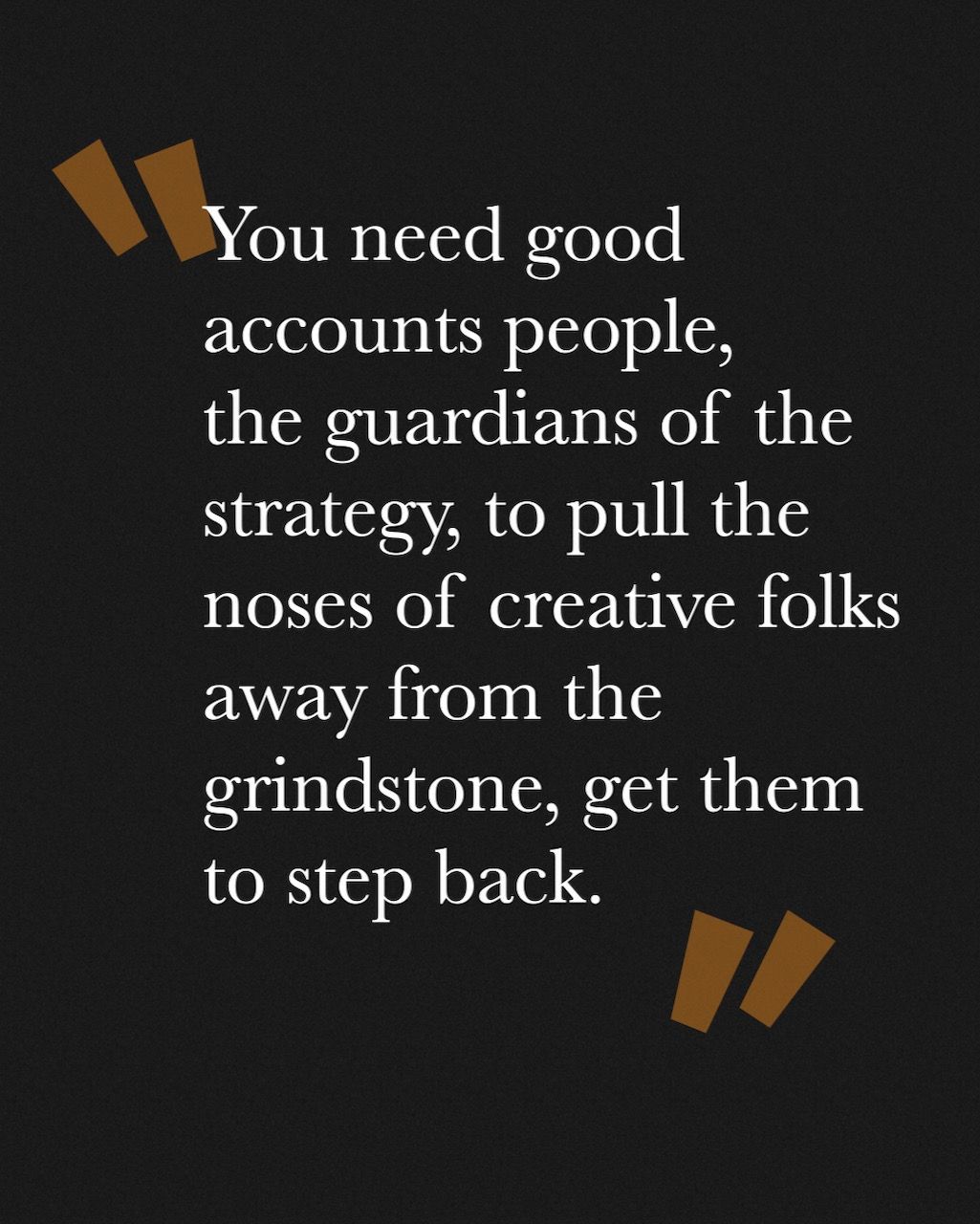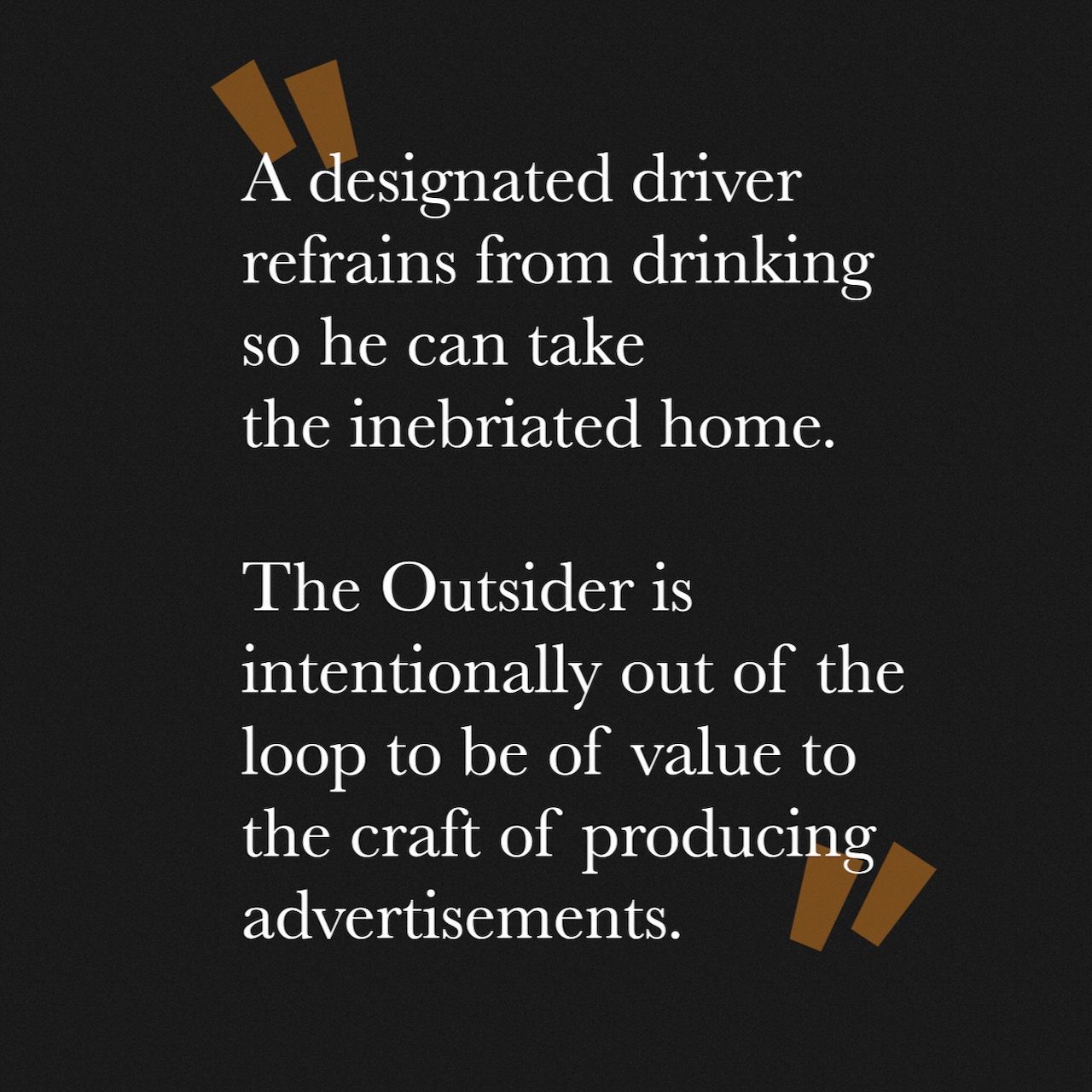
by Vincent R. Pozon
When the presented ad material does not make the hair on your arm stand on end, does not make you smile or tear up, who do you call?
"The Outsider."
The Man who Comes in from the Cold has an Advantage
How do I know when an advertising material is good? The measure of quality is when we are delighted with the work, when we know we have given it our best, when my nose for what sells, that faculty of discernment honed by half a century in this industry, smells potential, the power to ring the cash register. It is a moment that I especially relish. After surveying the work arrayed in front of me, after the days of anxiety, I lean back, smile, and say, “I’m OK now, this is really good.”
But when the materials fail to make the sparse hair on my arm stand on end, do not make me smile or tear up, I know I will need help. Who do I call?
The Outsider.
The Outsider has Clear Vision
Coming in from the cold, bereft of previous exposure to the affair at hand, the Outsider brings into the room an immense value: The value of innocence.
Many times, we ask people — a secretary from another team, a messenger, anyone who isn’t involved with the project — to come into the conference room and view a material. We try to peek into his mind, and to examine how a particular ad affects him. This helps us step back from craft concerns and to keep our eye on the objective and the big picture.

You would think that it would be easy to “step back”, but it isn’t.
Stepping back is difficult to do when enmeshed with the minutest requirements and chores, when entangled with craft decision-making. You cannot see the big picture if you’re trying to make decisions on what color carpeting to use in the set, whether a particular dress is considered a summer dress, or if the brow of a particular talent is crooked and needs fixing.
The devil is in the details: the big picture is affected, wrongly enhanced, waylaid, whittled down, or diffused by craft.
This is when you need good accounts people, the guardians of the strategy, to pull the noses of creative folks away from the grindstone, and to get them to step back.
The Customer is the ultimate Outsider, of course. He is the person we survey extensively and plumb for reactions to anything we intend to sell to him. But we can’t always pull a customer into the room — the luxury car buyer, the business traveller, the doctor who prescribes medicine; so we settle for next best.

What do We Ask the Outsider?
The reactions we need from The Outsider are on the Sensual Level. We want to hear gut reactions: Ang lakas! (Powerful!), Nakakaiyak (made me cry), Pangit ng talent (The talent is ugly), Anong nangyari sa huli? (What happened in the end?)
The sensual level reactions are the most valuable for obvious reasons. These are the comments that arise because of obstacles to comprehension. Advertising messages live in a world of seconds, and the existence of a single attention-vampire, say, bad make-up, loud prints on the talent’s shirt, can distract the customer completely.
In focus group discussions, we search for negatives. A negative sensual level reaction automatically means that there is something that needs fixing, or, at the very least, something to be concerned about.
Rational beings that we are, we appreciate things on a second level: the Formal Level.
At this stage, we ask the Outsider simple questions, “What do you think is the objective?” and “If this is the objective, are we saying it clearly?” Answers must be simple and short. If a commercial cannot be explained in a short sentence, then there is a problem to solve, and, most likely, it is a comprehension problem.
There is a third level: the Technical Level, which we are not interested in.
The Outsider should be asked to restrict himself to the first two levels. If he comments on the technical level, or makes technical recommendations (“Re-edit a section to show more surprise”, or “Shouldn’t the music rise to a glorious crescendo?”), he loses his value and becomes one of the craftsmen.

Respect and Preserve the Outsider
If we try to bring the Outsider into the problem, if we try to make him understand client concerns and tastes and point the various potholes and wrinkles of a particular project out to him, then he loses the customer point of view, and we lose him as an objective and useful resource.
Who can be the Outsider?
Confidentiality disallows us from yanking somebody from another floor or office, but he should be someone not involved with the project. He or she can be an accounts manager or creative head of another team, or anybody in upper echelons. The point is to institutionalize The Outsider. A designated driver refrains from drinking so he can take the inebriated home. The Outsider is intentionally out of the loop so he can startle craftsmen with perspectives they're not seeing.
First published as a column of the author in the Manila Times.
After a year of college, Koyang entered advertising, and there he stayed for half a century, in various agencies, multinational and local. He is known for aberrant strategic successes (e.g., Clusivol’s ‘Bawal Magkasakit’, Promil’s ‘The Gifted Child’, RiteMED’s ‘May RiteMED ba nito?”). He is chairman of Estima, an ad agency dedicated to helping local industrialists, causes and candidates. He is co-founder and counselor for advertising, public relations, and crisis management of Caucus, Inc., a multi-discipline consultancy firm. He can be reached through vpozon@me.com.
If you liked what you just read and want more of Our Brew, subscribe to get notified. Just enter your email below.


Related Posts
What We Get Wrong About This Strange Thing We Call Advertising
Jul 02, 2025
The Party as a Person: The Story of ‘Pag Mahal Mo, Akbayan Mo’
May 16, 2025
Frequently-Asked Questions About Advertising – Part VII
Apr 11, 2025